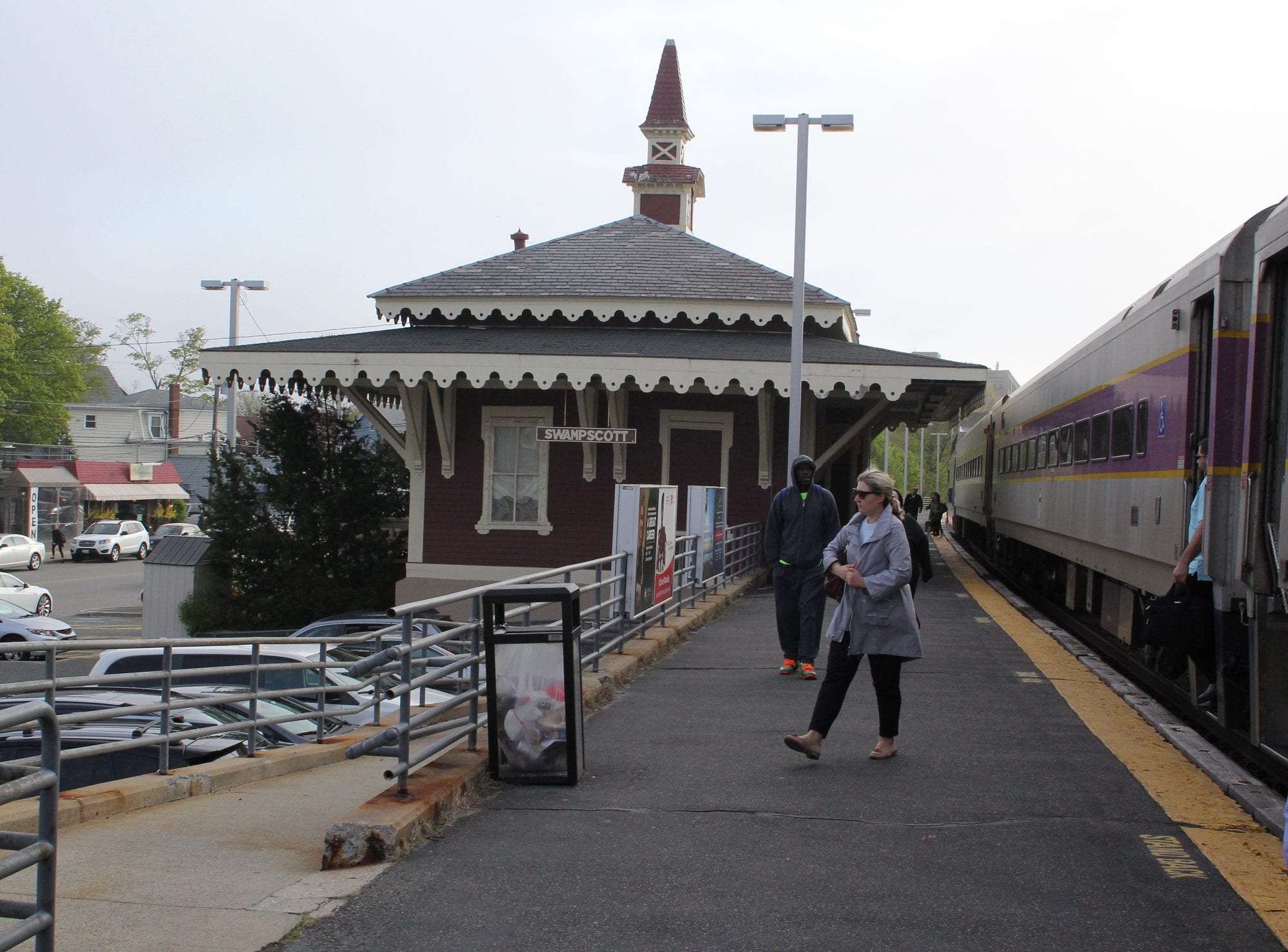SWAMPSCOTT — Town Meeting members will be asked later this month to approve a $25,000 study, which would plan for smart growth zoning in the train station neighborhood.
The allocation for the train depot neighborhood is tucked into a warrant article for capital projects, and the majority would be reimbursed to the town if it were to receive the MassHousing Technical Assistance grant officials applied for — the town would be responsible for 10 percent of the cost, according to Peter Kane, director of community development.
Kane said the study would help officials plan for a smart growth zoning change in the neighborhood, potentially next spring.
Smart growth zoning is enabling zoning from Massachusetts General Law, which essentially allows communities to develop an overlay district that encourages growth around transportation corridors, he said.
The Smart Growth Zoning Overlay District Act encourages communities to create dense residential or mixed-use smart growth zoning districts, including a high percentage of affordable housing units, to be located near transit stations.
Kane said the state has to approve the zoning bylaw before the town can approve it — as part of adopting a smart growth zone, the town is creating the ability to increase the amount of housing the community can create, but must make sure the proposed bylaw meets the general requirements of Mass General Law.
Town Administrator Sean Fitzgerald said the train station neighborhood has some exciting features because of the MBTA station and riders who use it, and the area could really thrive if there was more of a mixed use development opportunity through zoning.
“We need to create opportunity to see investments in key areas that would help support commercial growth and the more commercial growth, the more revenue, (and) the town can reduce the residential tax burden,” Fitzgerald said. “This is one of the many strategies that we’re trying to employ to help us see a greater investment in Swampscott.
“We also have another zoning article that looks at Vinnin Square and it also gets back to the town’s effort to get additional liquor licenses and really focus a strategic lens on what the opportunities are in Swampscott to enhance some of the better land use and zoning bylaws that can help us define our potential as a community.”
Kane said smart growth zoning for the train station neighborhood is a goal of the town’s Master Plan, which reads that the area holds considerable potential for additional retail and dining sector growth.
Smart growth would be meant to encourage mixed use and residential development, he said, and the zoning change would include components such as allowed uses, dimensional requirements and square footage.
“A handful of limited and full service restaurants and service-oriented businesses are scattered throughout the station, but the area currently lacks a sense of place and the appropriate retail mix that appeal especially to commuters and visitors that arrive by train.
“Moreover, among the largest opportunities to create an identity around the station area is the station itself, where a historic train depot currently stands, but is vacant due to the building’s condition. The station could give the area an identity, particularly with an active use to draw customers to the area,” the Master Plan reads.
The Swampscott Railroad Depot, which was built in 1868 and is listed on the National Registry of Historic Places, is not in use and has been vacant for years.
Hundreds of commuters pass by the Stick Style Railroad Depot on their way to and from the commuter rail. As of 2014, the building and its surroundings have been designated as the Swampscott Railroad Depot Local Historic District, according to the town’s Master Plan.
The town previously leased the building from the Massachusetts Bay Transportation Authority (MBTA), but the town didn’t renew its lease.
Kane said the property wouldn’t play into the smart growth district, as it is in a local historic district, but the smart growth would be around that area. He said the MBTA is going out to bid on the Swampscott Depot for a reuse, and the town is a part of that process.
Kane said town officials have worked with the MBTA to make sure their vision complies with the town’s for reuse of the train depot, which is rehabbing and reestablishing the historic exterior and getting a tenant in there that will play off commuter rail traffic and act as spurring development around that area.
Swampscott’s Railroad Depot is a remnant of the Eastern Railroad, the first line to pass through the town and important to its rise in importance as a summer resort, according to the Massachusetts Historical Commission.

